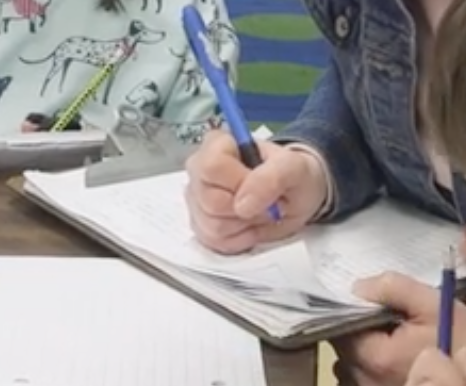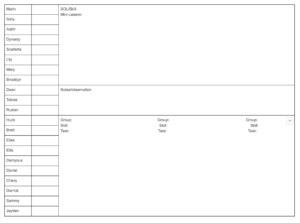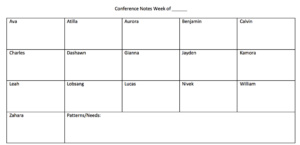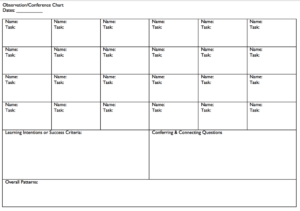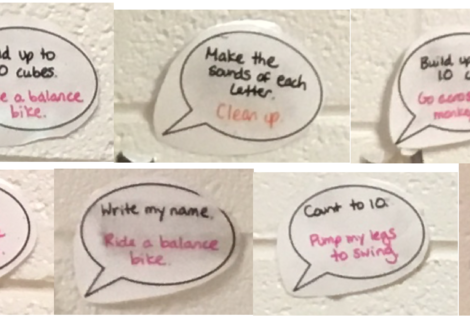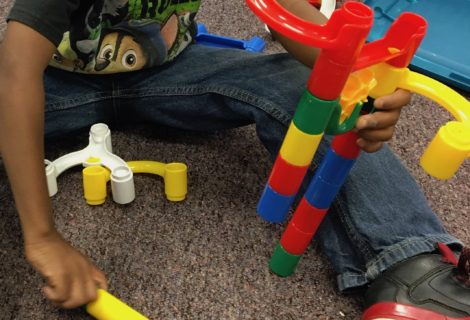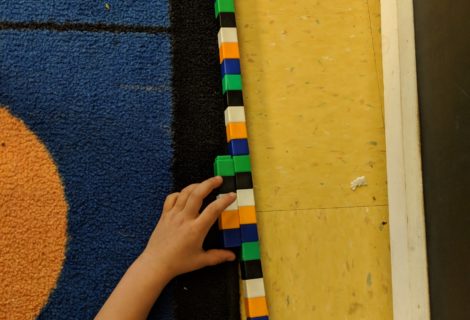Progress Monitoring Students’ Goals
Last time, we took first steps toward setting individual academic goals with students. Now that those goals are set and action plans created, how do you keep track of all the learning? How can you make decisions about where to go next?
Progress monitoring is a systematic way to collect information about student learning to see if students are meeting goals and then determining next instructional steps and necessary student feedback.
What can it look like?
- Questioning students during classroom discussions
- Conferring with students one-on-one during work time about their work on the goal
- Assigning and collecting completed tasks related to the goal
Take Ava for example. During a one-on-one writing conference with Ava, I noticed she was consistently misspelling words that ended with “ing.” We had looked at the “ing” chunk during reading workshop so I knew it was something that was within her reach. I asked her if she noticed what was the same about three words she misspelled. Through our conversation she was able to identify the common characteristic: “ing.” We decided to set one of her writing goals as correctly representing the “ing” sound in words. We put supports in place to help her be successful by adding the “ing” chunk to her alphabet chart. We also added to her personal word wall some “ing” words that she frequently writes.
What do you do with all the information?
The information you gather when meeting with a student or group of students about their goal is critical for helping students determine their next steps and making the learning visible. It can be easy to have these conversations with students throughout the day but without proper record keeping of the conversation the momentum towards the goal can be lost. Developing a recording keeping format that works for you is key to successful implementation. There is not one format that works for all teachers in all situations.
In my classroom, I use a chart that includes all my students’ names on one side with their goal, so that I am able to keep track of when I have checked in and where we need to go next. Then I am able to plan tasks, conversations, and small groups based on the needs of the students. I share my record keeping with students so they can see where they are in relation to meeting their goal and are included in determining what next steps need to happen.
Here are some sample recording keeping systems that could be used:
In Ava’s case, I recorded her goal of correctly representing “ing” in her writing. When I touched base with her during my next cycle of conferences, we went back through her writing to identify places she used “ing” and see how she was progressing towards her goal. Eventually, we established that she was correctly representing the sound in the majority of instances. We celebrated meeting her goal and then set another goal.
Do you have a favorite progress monitoring tool? What system(s) do you have in place to help keep track of your students’ goal progress? Start with something and then make adjustments as you go. Over time you will find the system that works for you and your students.
Interested in learning more? Come to our March 19th VaSCL workshop, Differentiation in the Workshop Model: Matching Tasks to Students, where we will examine the three components of the workshop model and how it can support student assessment and goal setting. We will then unpack the steps necessary to make intentional decisions in terms of task selection, differentiation and student goal setting with in the workshop. Through a literacy and mathematical lens, we will explore strategies for differentiating the content, process, and product based on student goals as well as strategies to select and match tasks to students. Register at https://www.vascl.org/.
